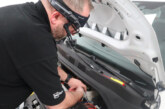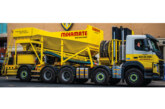
As the ACEA 2012 sequences are phased out and with ACEA 2016 sequences now mandatory, CVW speaks to Andrew Goddard, Chairman of the Verification of Lubricant Specifications (VLS), about what this means for workshops and what further changes lie ahead.
The ACEA specifications are developed by the European Association of Original Equipment Manufacturers. They indicate a performance standard specifically tailored to the needs of the European vehicle market (in contrast to the API or American Petroleum Institute, which is focused on the US vehicle fleet). Along with the SAE, such as 5W-30, they provide a vital piece of information for selecting the right oil for a vehicle.
Using the right oil really does matter. Putting inadequate or incorrect oil in a van or truck accelerates wear to gears and bearings, which could lead to increased maintenance costs and may significantly shorten the engine’s life.
Changing requirements and changing sequences
As engine technology advances to cater to demands for lower emissions and increased performance, lubricants change too. Higher operating temperatures with instances of higher pressures and smaller sumps require thinner, less viscous lubricants to work effectively. The ACEA sequences change to cater to this, being revised every few years. To balance clarity for users with practicality for manufacturers, each set of sequences has a crossover period. For the 2012 sequences, this has now come to an end. From the 1st of December 2018, products can no longer be marketed if they are making claims against the 2012 sequences.
The 2016 sequences have been mandatory for all new claims since 1st December 2017 and should now be the only claims in operation. These ACEA sequences identify relevant performance standards for lubricants based on the type of engine – usually the ‘A’ series of gasoline or petroleum engines and the ‘B’ series for diesel engines including light vans. Both these ‘A’ and ‘B’ sequences are designed for vehicles not fitted with exhaust after treatment devices.
For vehicles that are fitted with either a catalytic converter or diesel particulate filter, the ‘C’ sequences apply, where ‘C’ represents catalyst compatible. So, a typical series of sequences might be ACEA A3/B4, or alternatively ACEA C3. The exact combination of letters will depend on the engine’s specific requirements, and for heavy commercial diesel engines then the ACEA ‘E’ series will apply.
Looking ahead
ACEA has already started work on the next set of revisions, due to be published by the end of 2018. However, keeping up with the pace of change presents a real challenge. As engine technology evolves with new turbochargers, low-speed pre-ignition (LSPI) and other changes, new tests need to be developed to ensure lubricants can be categorised correctly.
Changes are expected across both LGV and HGV categories alike, to reflect the desire for increased efficiency in both fuel and emissions.
The Department for Transport’s recently published strategy on the ‘Road to Zero Emissions’ will also have an impact. As LGV and HGVs come under increased scrutiny for lower emissions, so does ensuring the right choice of oil is used to keep vehicles meeting lower emission targets without interfering with any exhaust after treatment devices.
At VLS, our aim is to protect workshops, technicians, haulage operators, and everyone involved in the automotive supply chain by investigating claims regarding lubricants specifications. We ensure that products are correctly described, can deliver what they claim and are fit for purpose. As the industry continues to innovate, we will focus on education to ensure that users can be confident they are stocking and using the correct oils.








